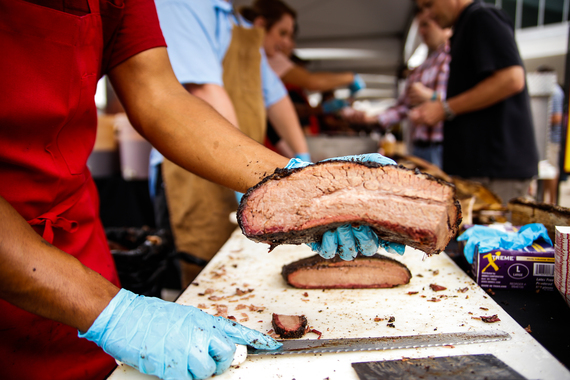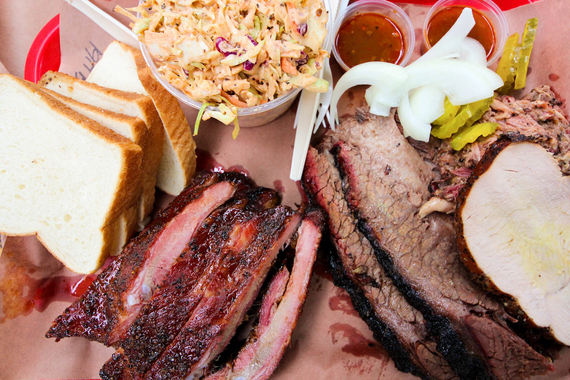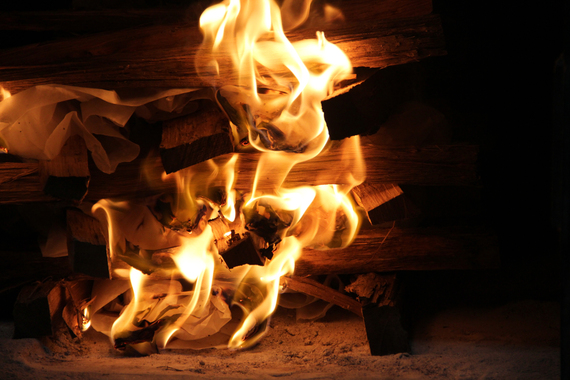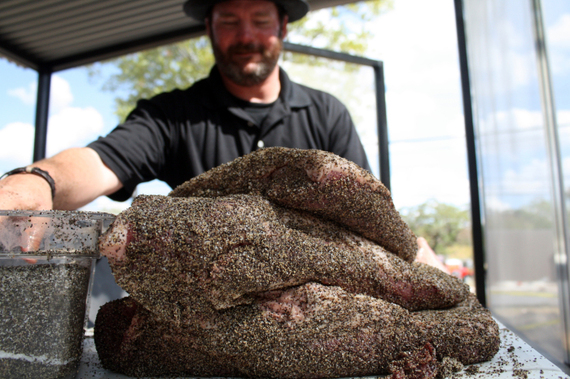By: Dan Gentile
They say everything's bigger in Texas and barbecue is no exception. Barbecue tradition runs deep in the Lone Star State, but it's only been in the past decade that the region's signature style has stolen the national smoked meat spotlight from the pork-minded pitmasters of Tennessee and the Carolinas. It's hard to understand what makes the state's barbecue unique if you haven't spent time in Central Texas, so here's everything you need to know to eat barbecue like a true Texan.
When people say "Texas-style," they mean "Central Texas-style"
South Texas focuses on barbacoa, East Texas serves chopped beef, and West Texas cooks over direct heat in a style more akin to grilling. The food varies depending on where you are in the state, but when people use the term "Texas barbecue" it almost always translates the Central Texas-style of cooking brisket low and slow over indirect heat. Since you'll rarely see the others unless you're road-tripping to remote corners of the state, most of this article concerns the style associated with Central Texas.
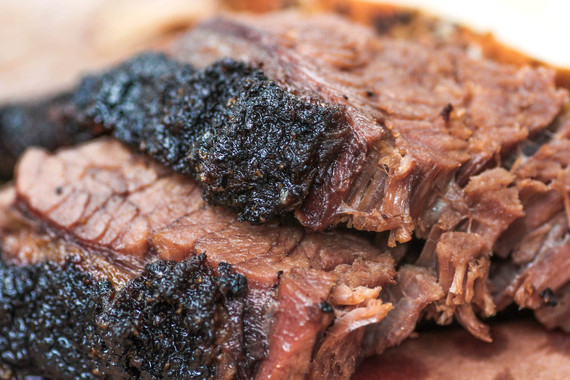
Credit: Dan Gentile/Thrillist
Beef is the main course
The first thing that makes Texas the iconoclast of the 'cueing world is a worship of beef over pork. The preference dates back to the cattle industry, but culturally you can chalk it up to bigger-in-Texas palates. Argue all you like about proteins, but it's tough to convince a Texan that the other white meat packs more flavor than a well-cooked piece of beef.
The two types of brisket are moist and lean
A brisket has two distinct portions, the leaner "flat" and the fattier "point." Some menus list both types, but even those that don't will happily cut from whichever side of the brisket a customer prefers. Fatty (aka "moist") is more popular and loaded with flavor. The lower fat content of the lean side makes it harder to cook perfectly, but it's by no means a second class barbecue citizen -- it's still served with a sliver of fat cap.
No combo plate is complete without brisket
Pork ribs, sausage, turkey, beef ribs, and pulled pork typically round out a menu, but no plate of Texas barbecue is complete without brisket. The collagen-packed chest muscle is king and how it's cooked is considered the true measure of a pitmaster's skill. If Texas had a list of barbecue commandments, Thou Shalt Order Brisket would be No. 1.
White bread, onions, and pickles are free
Condiment stations are always loaded with quartered white onions, pickles, and cheap white bread. There might occasionally be a charge for more premium bread or fancy pickles, but the standards should definitely come for free.
Wood is favored over charcoal or gas
Smokers with a gas assist function have gained popularity in higher volume restaurants, but most masters still do it the old-fashioned way: a hardwood fire that's watched carefully overnight. The most common wood used in Central Texas is post oak, but you'll also see mesquite and hickory.
The fires burn low and slow
One of the hardest parts of barbecuing is the meticulous management of a fire. If you cook too hot and fast, the collagen won't have time to render and the inherent toughness of the cut of meat will prevail. Pitmasters subscribe to a low and slow philosophy that can take up to 20 hours for each brisket.
Many of the most legitimate barbecue operations happen outdoors
Based on regulations on indoor smokers, spatial considerations, and the low startup cost of trailers, cooking is often done outside. This further complicates the fragile ecosystem inside the smoker and tests a pitmaster's abilities.
The rubs aren't loaded with secret spices
One of the primary distinctions of Central Texas BBQ is simplicity. Many pitmasters will sneak in a hint of garlic powder or cayenne, but the traditional rub for a brisket is a fistful of salt and black pepper to amplify the flavor without complicating it.
To find out what 9 other things you need to know about Texas BBQ, get the full story at Thrillist.com!
More from Thrillist:
Like Thrillist on Facebook: www.facebook.com/Thrillist
